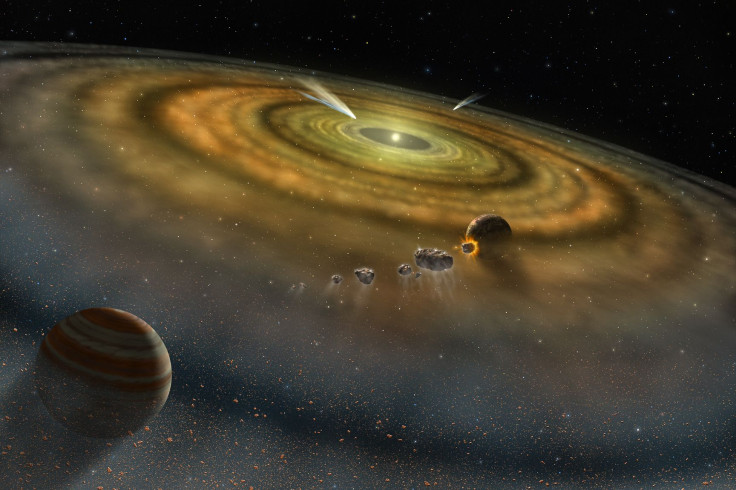Mineral Preserved From Solar Nebula Discovered In Ancient Meteorite

As astronomers across the globe continue to explore origins of the Solar System, an international team of scientists has uncovered distinct traces of a mineral preserved from solar nebula – the earliest phase of our stellar neighborhood.
The mineral, crystalline silica-made quartz, was found in a primitive carbonaceous meteorite named Yamato-793261 (Y-793261). It was spotted more than three decades ago on an ice field near Japan’s Yamato Mountains.
A follow-up analysis by researchers from Waseda University, Harvard University, and the University of Hawaii confirmed it as the first evidence of silica condensation within the solar protoplanetary disk, which was the birthplace of Earth and all other planets in the system.
"The degree of crystallinity of organic matter in Y-793261 shows that it did not undergo thermal metamorphism [change in chemical makeup]," Timothy Jay Fagan, co-author of the study, said in a statement. "This confirms that Y-793261 preserves minerals and textures of its nebular origin, providing us with records of the early solar system."

Though scientists already had an idea of silica formation in new-born stars, the evidence of its condensation was never seen until Y-793261 was analyzed. As part of the effort, the team looked into the make-up of the meteorite.
There, they found some refractory inclusions – meteoritic constituents that are believed to be some of the oldest solids of the solar system. They probably formed at very high temperatures and can be classified into two groups – calcium-aluminum-rich inclusions (CAIs) and amoeboid olivine aggregates (AOAs).
In the Japanese meteorite, the team found traces of quartz, which forms at low temperature, along with typical AOA minerals and ultra-refractory scandium- and zirconium-bearing minerals that form at very high temperatures.
"Such variety in minerals implies that the AOA condensed from nebular gas to solid over a wide temperature range from approximately 1500 - 900°C," Fagan explained. "This aggregate is the first of its kind to be found in our solar system."
But that wasn’t it. The team also noted the isotopic composition of quartz present in the meteorite and found the signature of oxygen in it was very similar to that present near the sun as well as the AOA minerals. This suggests the minerals in question likely formed in a region close to a new-born sun in the solar nebula. After forming, the minerals were condensed by the nebula gas, which made it rich in silica and helped with the crystallization of the quartz, the team added.
The discovery takes scientists a step closer to understanding the origin and evolution of our solar system. According to the researchers, the meteorite that hosted these minerals is likely to be located somewhere near Ryugu, a distant space rock currently being explored by the Japanese Space Agency's Hayabusa2 space probe.
The study titled, "First evidence for silica condensation within the solar protoplanetary disk,” was published Aug. 21 in the journal PNAS.
© Copyright IBTimes 2024. All rights reserved.




















